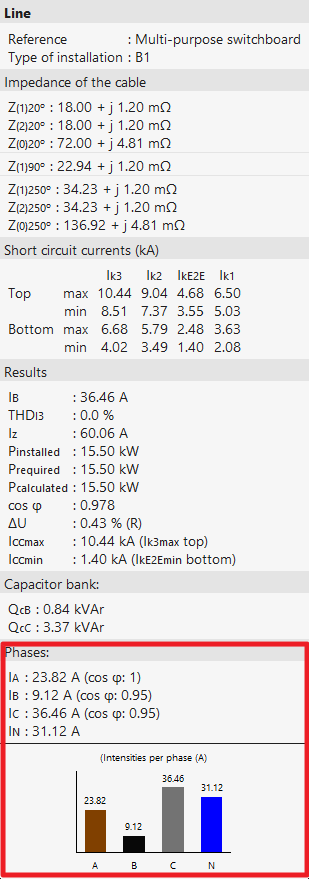Calculating currents by unbalanced phases
When designing a three-phase electrical system, it is often assumed that the distribution of the loads in each of the phases will be balanced. This way of proceeding may be more convenient when considering the design, but it is only an approximation, as it is very difficult to achieve total balance. The possibility of designing the system with an unbalanced phase distribution makes it possible to select the phase to which each of the loads is connected. This makes it possible to carry out a preliminary study of the load distribution and avoid imbalances between phases that could affect the correct functioning of the system.
Furthermore, if the proposed system presents any imbalance between phases, the program will carry out all the relevant checks in order to model the real behaviour of the lines. In this sense, the currents circulating through each of the phases and the neutral phase will be taken into account to compensate for the imbalance between them, these currents will be considered when correctly designing the section of each conductor (including the neutral phase) and both the simple voltage drops (phase-to-neutral) and the compound voltage drops (phase-to-phase) will be calculated.
Then, in the tooltip that appears when hovering over the elements after the calculation, the calculated phase currents can be displayed by activating the corresponding checkbox from the "Results presentation" option in the "Project" group of the program's general interface.

